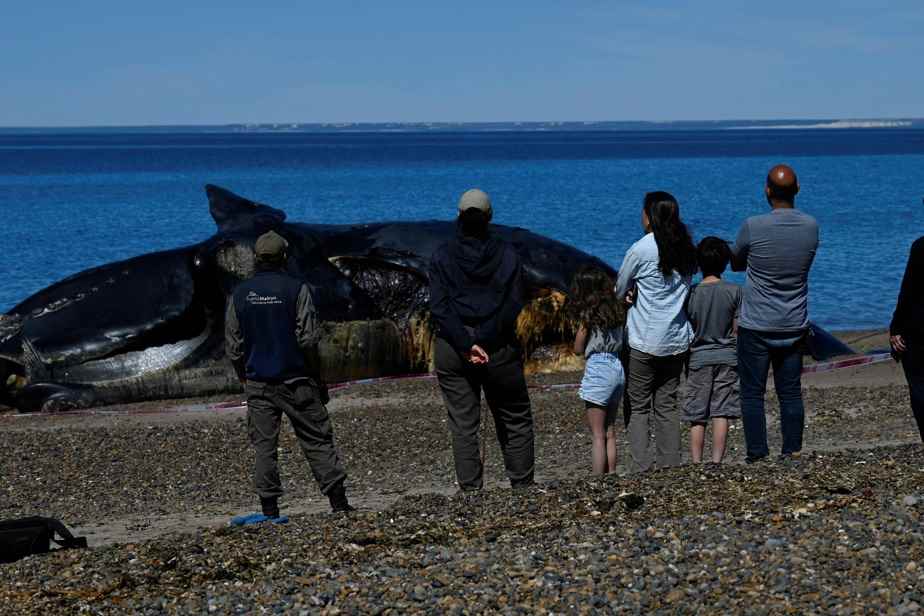(Buenos Aires) The serial deaths of southern whales in recent days in southern Argentina, which could be linked to the proliferation of a micro-algae, are worrying scientists, who nevertheless welcome this year a presence cetacean record for 50 years.
Posted at 10:14 a.m.
From the first corpse found on September 24 until October 2, at least 13 dead whales have been recorded in the Gulf of Nuevo, near the Valdez Peninsula (1,300 km from Buenos Aires), a sanctuary and breeding ground where the southern right whale (Eubalaena australis) returns from July to November, according to the Institute for Whale Conservation (ICB).
Autopsies on the recovered corpses-several are still offshore-and water and shellfish analyzes are underway, “to determine the possible presence of biotoxins linked to the proliferation of harmful algae, commonly known as red tide”, according to Agustina Donini, coordinator of the Whales Program, quoted in the ICB press release on Monday.
“None of the (dead) whales observed to date showed signs of traumatic lesions or grip (in nets or fences, editor’s note), and all were in good nutritional condition,” notes the ICB.
The unusually high number of whales that died in a short time in the same area suggests that “a local environmental variable” may have contributed, according to Marcella Uhart, co-director of the program.
The “red tide” is a phenomenon, partly seasonal, of the proliferation of certain microscopic algae, linked to a combination of factors such as water temperature, luminosity, acidity or salinity. The microalgae pigment can, depending on the amount, produce reddish slicks on the surface, hence the name.
The mayor of Puerto Piramides, Fabian Gandon, also seemed to favor this hypothesis, referring to “unusual growth” of the red tide in the Nuevo and San José gulfs.
Recommendation was given to the local population not to consume bivalve molluscs, which have the particularity of concentrating the toxins linked to the micro-algae. Toxicity to humans depends on the degree of concentration.
Despite these series of whale deaths, the ICB’s annual photo-aerial survey had counted 1,420 whales this season (mainly right whales), including 554 babies, in the waters of the Nuevo and San José gulfs, i.e. “the greatest number of ‘individuals observed in 51 years of study’.
The ICB assures that there are still “many more whales” in the area, because the purpose of the overflights is not so much to count them as to identify each cetacean, which is possible thanks to the calluses on the head. of the right whale, unique to each animal. The ICB thus has a register of 4000 specimens.
To date, the ICB has no certain explanation for this return in numbers of whales to Valdez, which has been noticeable for about two years. He also recalls that the number of dead whales is currently well below the 45 recorded in 2021.
